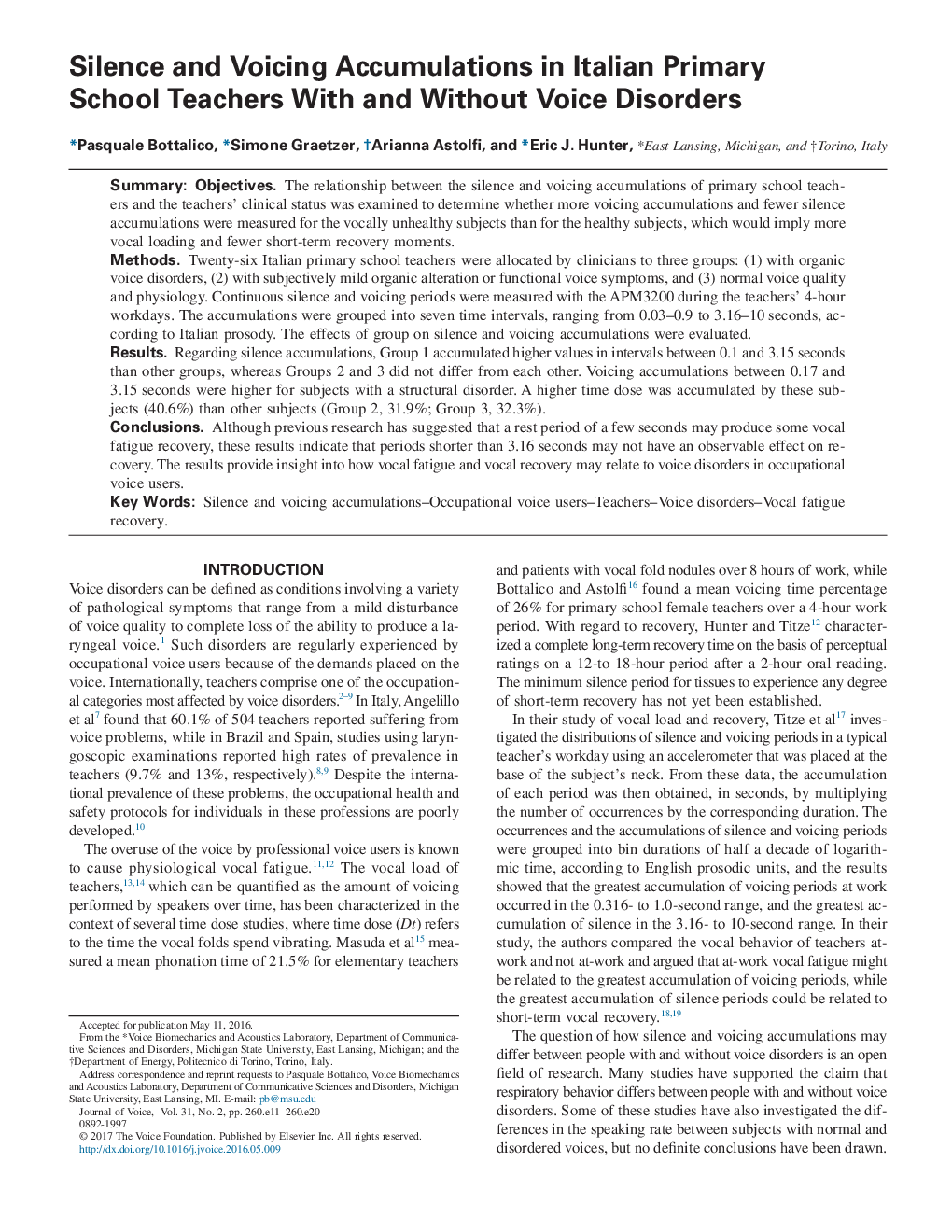| Article ID | Journal | Published Year | Pages | File Type |
|---|---|---|---|---|
| 5124454 | Journal of Voice | 2017 | 10 Pages |
SummaryObjectivesThe relationship between the silence and voicing accumulations of primary school teachers and the teachers' clinical status was examined to determine whether more voicing accumulations and fewer silence accumulations were measured for the vocally unhealthy subjects than for the healthy subjects, which would imply more vocal loading and fewer short-term recovery moments.MethodsTwenty-six Italian primary school teachers were allocated by clinicians to three groups: (1) with organic voice disorders, (2) with subjectively mild organic alteration or functional voice symptoms, and (3) normal voice quality and physiology. Continuous silence and voicing periods were measured with the APM3200 during the teachers' 4-hour workdays. The accumulations were grouped into seven time intervals, ranging from 0.03-0.9 to 3.16-10âseconds, according to Italian prosody. The effects of group on silence and voicing accumulations were evaluated.ResultsRegarding silence accumulations, Group 1 accumulated higher values in intervals between 0.1 and 3.15âseconds than other groups, whereas Groups 2 and 3 did not differ from each other. Voicing accumulations between 0.17 and 3.15âseconds were higher for subjects with a structural disorder. A higher time dose was accumulated by these subjects (40.6%) than other subjects (Group 2, 31.9%; Group 3, 32.3%).ConclusionsAlthough previous research has suggested that a rest period of a few seconds may produce some vocal fatigue recovery, these results indicate that periods shorter than 3.16âseconds may not have an observable effect on recovery. The results provide insight into how vocal fatigue and vocal recovery may relate to voice disorders in occupational voice users.
